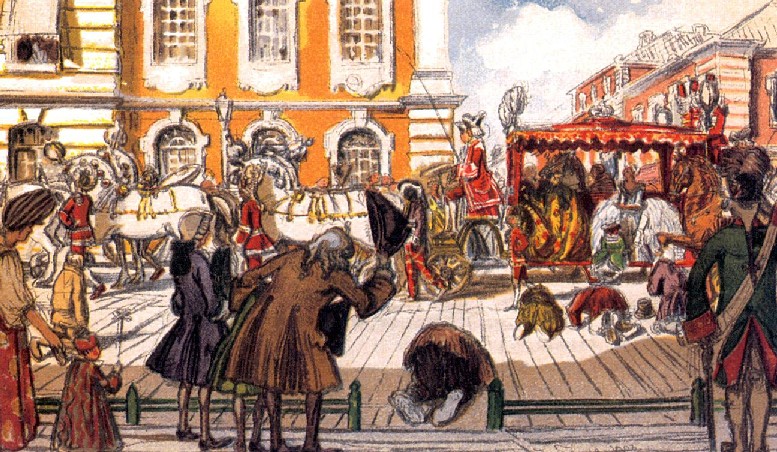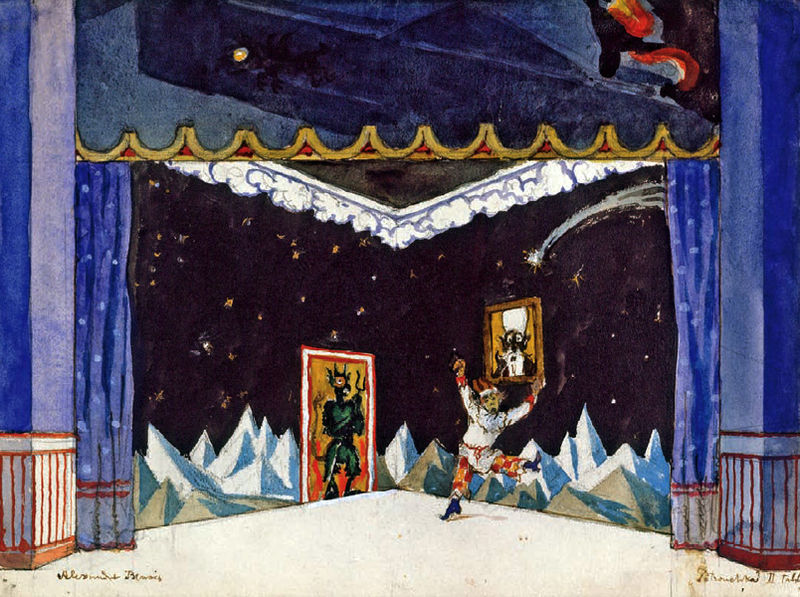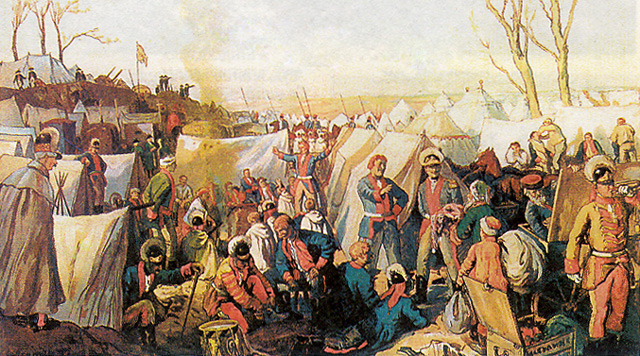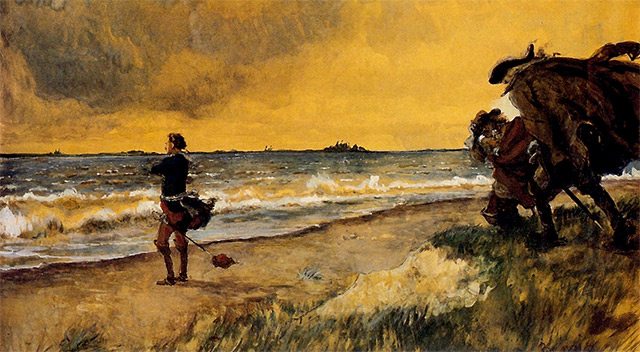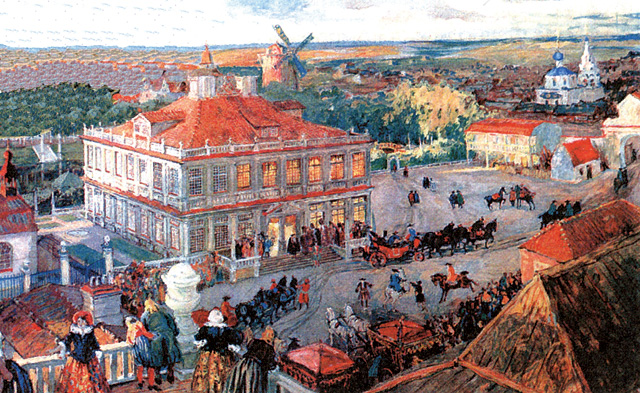<Back to Index>
- Art Critic and Artist Alexandre Nikolayevich Benois, 1870
PAGE SPONSOR
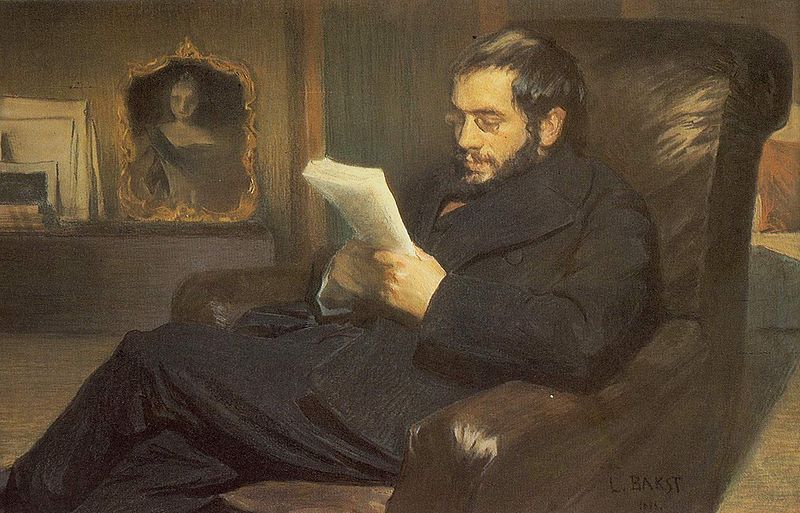
Alexandre Nikolayevich Benois (Russian: Алекса́ндр Никола́евич Бенуа, also spelled Alexander Benois) (3 May [O.S. 21 April] 1870, St. Petersburg – 9 February 1960, Paris), an influential artist, art critic, historian, preservationist, and founding member of Mir iskusstva (World of Art), an art movement and magazine. As a designer for the Ballet Russes under Serge Diaghilev, Benois' influence on the modern ballet and stage design is considered seminal.
Alexandre was born into the artistic and intellectual Benois family, prominent members of the 19th and early 20th century Russian intelligentsia. His father was Nicholas Benois, a noted Russian architect. His brothers included Albert Benois and brother Leon; the latter also became a notable architect. Not planning a career in the arts, Alexandre graduated from the Faculty of Law, St. Petersburg University in 1894.
Three years later while in Versailles, Benois painted a series of watercolors depicting Last Promenades of Louis XIV. When exhibited by Pavel Tretyakov in 1897, they brought him to attention of Sergei Diaghilev and the artist Leon Bakst. Together the three men founded the art magazine and movement Mir iskusstva (World of Art), which promoted the Aesthetic Movement and Art Nouveau in Russia.
During the first decade of the new century, Benois continued to edit Mir iskusstva, but also pursued his scholarly and artistic interests. He wrote and published several monographs on 19th century Russian art and Tsarskoye Selo. In 1903, Benois printed his illustrations to Pushkin's poem Bronze Horseman, a work since recognized as one of the landmarks in the genre.
In 1901, Benois was appointed scenic director of the Mariinsky Theatre in St. Petersburg, the performance space for the Imperial Russian Ballet. After that, he devoted most of his time to stage design and decor.
During these years, his work with the Ballets Russes, founded by Diaghilev, was groundbreaking. His sets and costumes for the productions of Les Sylphides (1909), Giselle (1910), and Petrushka (1911), are counted among his greatest triumphs. Although Benois worked primarily with the Ballets Russes, he also collaborated with the Moscow Art Theatre and other notable theaters of Europe.
Surviving the upheaval of the Russian Revolution of 1917, Benois achieved recognition for his scholarship; he was selected as curator of the gallery of Old Masters in the Hermitage Museum at Leningrad, where he served from 1918 to 1926. During this time he secured his brother's heirloom Leonardo da Vinci painting of the Madonna for the museum. It became known as the Madonna Benois. Benois published his Memoirs in two volumes in 1955.
His nephew Nikolai Benois, son of his brother Albert, married the opera singer Maria Kuznetsova. Benois was also the uncle of Eugene Lanceray and Zinaida Serebriakova, who became recognized Russian artists, and one of the great - uncles of the British actor Sir Peter Ustinov.
